Télétel: The French Internet Phenomenon of the 1980s Explored
Written on
Understanding Télétel: France's Early Internet System
It may come as a surprise to many, but France was already experimenting with an internet-like system back in the 1980s. Let’s delve into how this was achieved.

The Minitel Revolution
While the idea of connecting computers to a network dates back several decades (with TCP and FTP protocols emerging in the 70s), this technology was predominantly reserved for universities and major government agencies like NASA. However, the vision of making online services accessible to the general public was enticing. As electronic components became less expensive, this vision began to materialize.
By the late 1970s, the Videotex protocol had been developed, allowing users to access information through modems connected to telephone lines. Instead of requiring a full computer setup, the system utilized “dumb terminals” designed solely for displaying data on a CRT screen. This simplified architecture made it more affordable, prompting various countries to test different prototypes. Although many initiatives, such as Viewtron in the US and Prestel in the UK, struggled to gain traction, France took a different route.
Minitel's unique approach stood out. The concept of a “video display terminal” was not new; by the 60s and 70s, it was a standard method of interfacing with large mainframes.
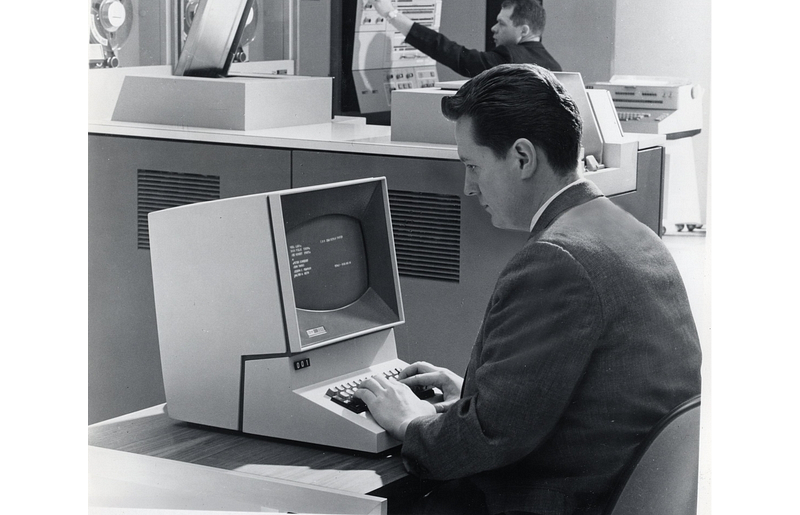
These terminals were built without costly internal components, relying solely on a serial port for data transmission at speeds of 300–9600 bps. The challenge lay in creating affordable devices for everyday consumers. While private enterprises struggled with this task, France took it on as a national initiative. Karin Lefevre from France Telecom stated, “It was not just a technological project; it was political, aimed at computerizing French society and ensuring its technological independence.” They succeeded in this endeavor by producing the Minitel device, which cost around $200 but was often provided free to telephone subscribers.
Launched in 1982, the Télétel network was primed for success due to significant state support. Although some services, like accessing phone directories, were complimentary, users incurred charges for other services, approximately 1.25 francs (25 cents today) per minute, added to their phone bills. Minitel was heavily promoted through media channels:
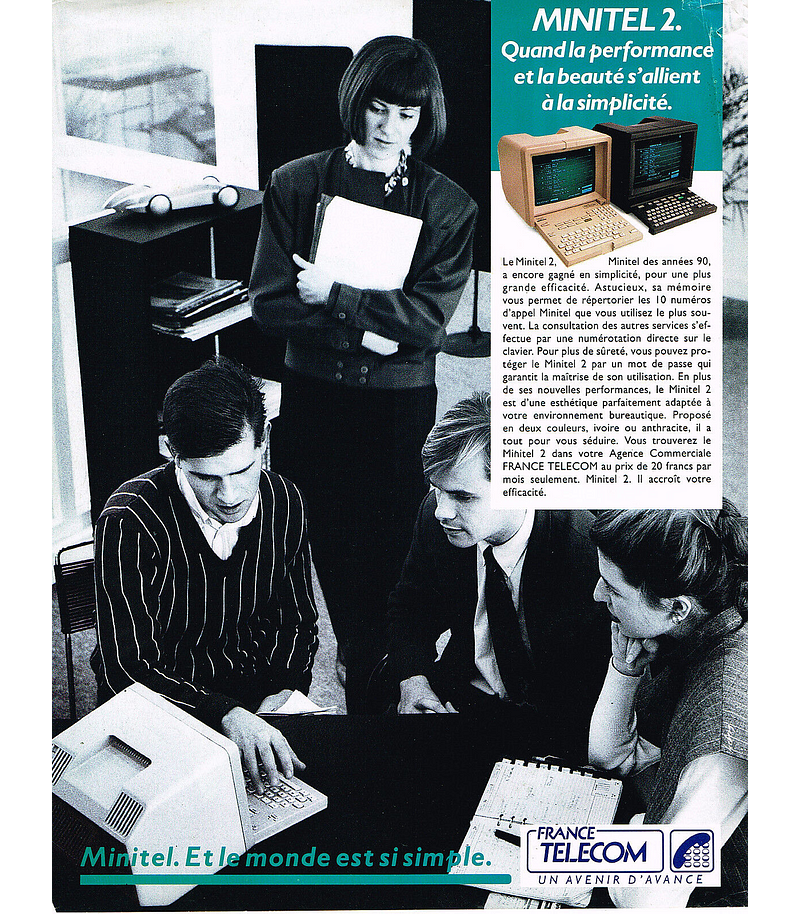
A plethora of services emerged, including chat rooms, messaging, and online dating, with Minitel short numbers featured in magazines, reminiscent of today’s website advertisements:
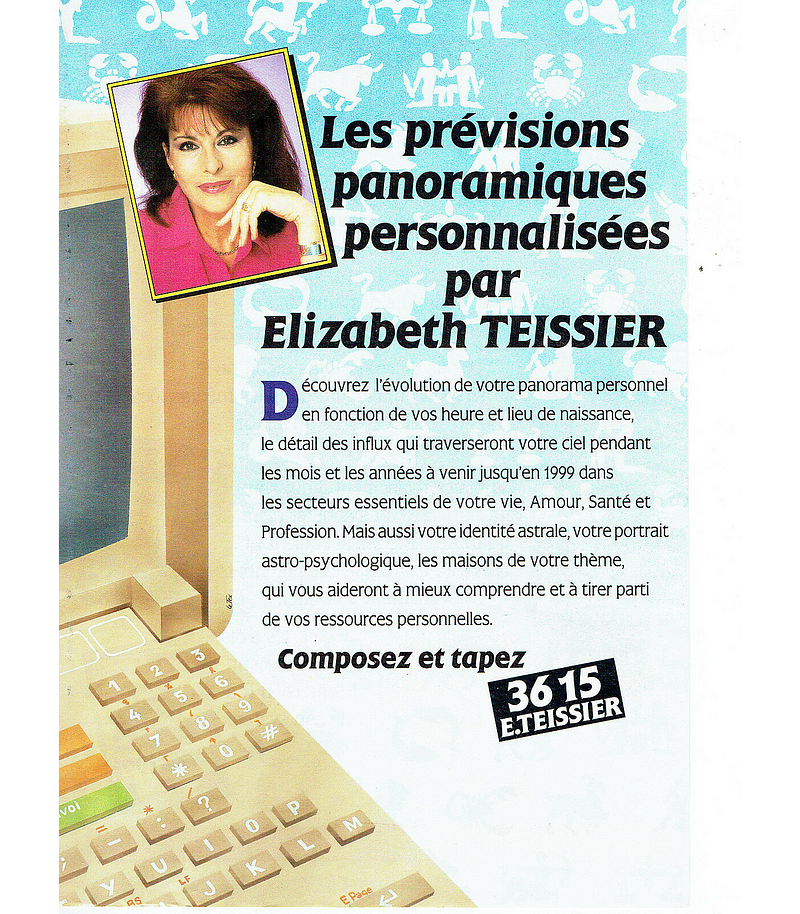
The Télétel network quickly gained popularity. Minitel terminals were user-friendly and the pricing model was appealing, even though some users spent excessively on their Minitel usage. By 1986, there were 1.4 million terminals connected in France; this number swelled to 6.5 million by 1994, with around 26,000 services available. In 1998, Minitel generated €832 million ($1.12 billion) in revenue, with €521 million funneled to service providers. Interestingly, by 2001, France Telecom recorded 15 million Minitel users, outnumbering the 11 million internet users at the time. Minitel even permeated popular culture, inspiring films like “3615 code Père Noël” in 1989:

Remarkably, the Télétel network continued operations until 2012, a testament to its success despite the limitations of Minitel terminals, which featured a modest black-and-white display with a resolution of only 40x25 characters.
Minitel Hardware: A Glimpse Inside
While it's no longer possible to obtain Minitel terminals from telecom providers, many units are available on eBay for €20–50. I found a “Minitel 1” model online for around €40, which was surprising given that Minitel services were likely not available in the Netherlands.
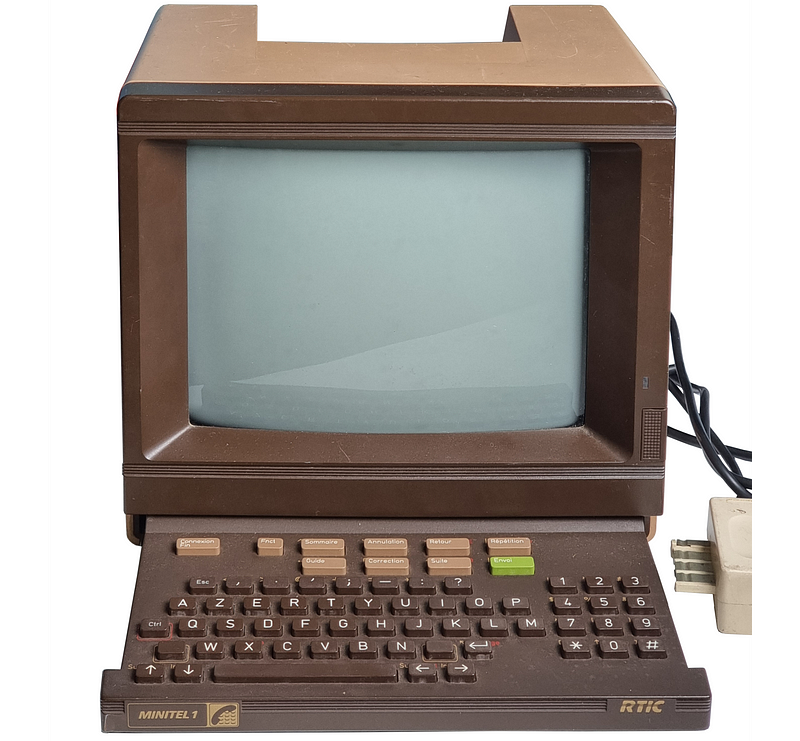
The terminal includes a plug for telephone line connection and a slide-out keyboard, though the keys are more akin to a TV remote than a traditional keyboard. The CRT screen measures just 9 inches, sufficient for its limited text resolution.
Inside, the terminal is mostly empty, housing minimal components:
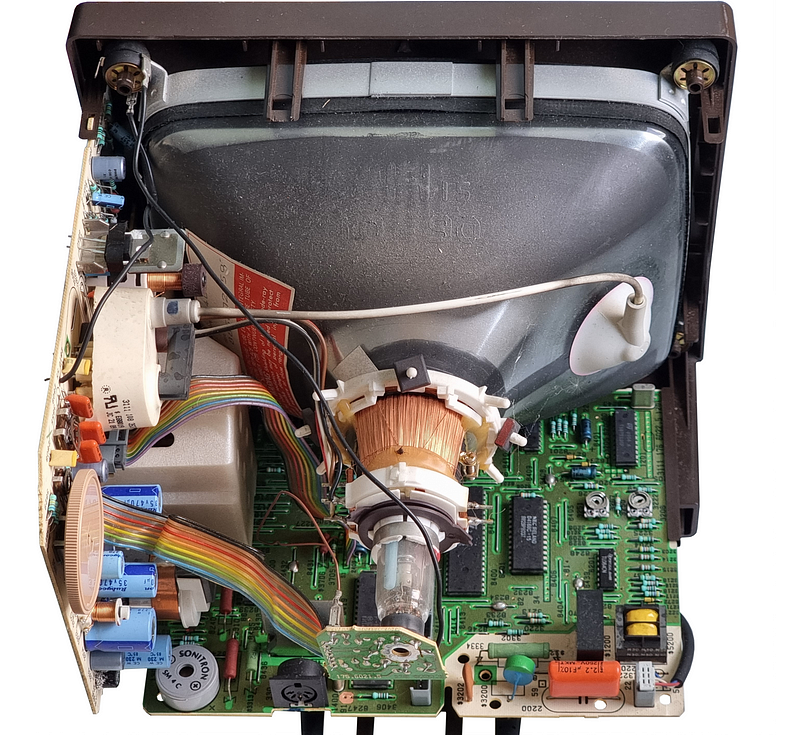
The “Minitel 1” utilizes an Intel 8052 microcontroller with 8 KB of ROM and only 256 bytes of RAM:
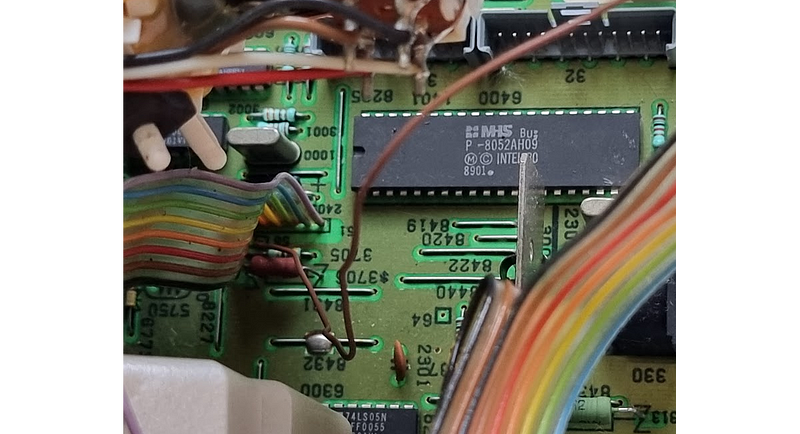
Despite not being a fully-fledged computer, this setup can display incoming data and perform basic functions like adjusting the baud rate or dialing. Notably, a DIN-5 serial port allows Minitel to send and receive data beyond just telephone lines.
Testing Minitel's Capabilities
Upon powering on, the Minitel terminal boots to a black screen with a cursor, lacking an operating system:
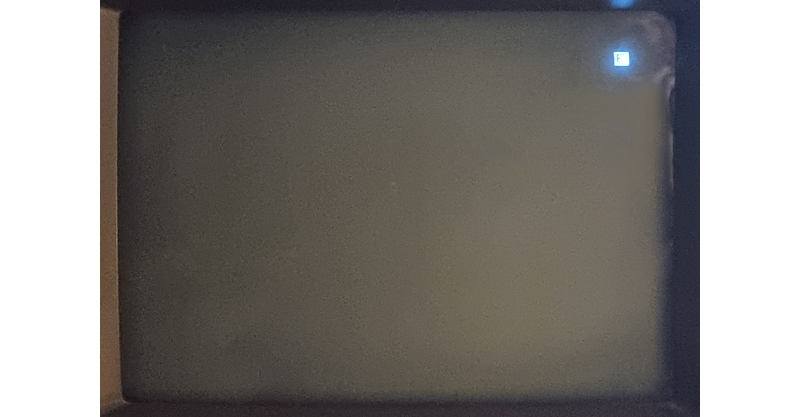
While there’s no “Print Screen” option, certain keyboard shortcuts are available to adjust settings or modes:
- FNCT+T then I: Memory reset
- FNCT+T then V: Vidéotext mode (40 columns)
- FNCT+T then A: ASCII US mode (80 columns)
- FNCT+T then F: ASCII FR mode (80 columns)
- FNCT+T then E: Echo On/Off
- FNCT+C then E: Enable extended keyboard (Ctrl, Esc, arrows)
- FNCT+C then V: Disable extended keyboard
- FNCT+P then 1, 3, or 4: Switch baud rates (1200, 300, or 4800)
Equipped with this knowledge, we can connect the Minitel to various hardware.
Integrating Minitel with Arduino
A straightforward way to test the Minitel is by connecting it to an Arduino UNO board, as both operate on 5V logic. Only three wires are needed for this connection:
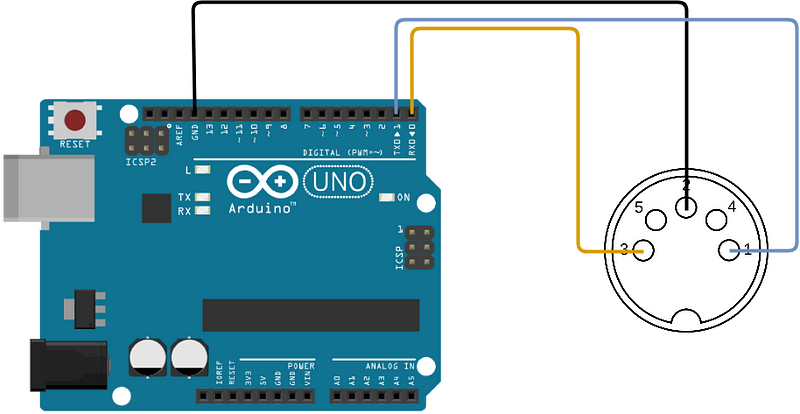
The Minitel1B_Hard Arduino library offers several examples that can be uploaded to the board. Although it showcases Minitel's text capabilities, the Arduino Uno lacks WiFi and networking functionality, limiting its potential.
Using Raspberry Pi with Minitel
A more engaging project involves creating an adapter from a few components, allowing Minitel to connect with a Raspberry Pi.

This setup enables Minitel to function as a Linux terminal. After connecting and booting both devices, you can activate the Linux serial login by executing the command on the Raspberry Pi:
/sbin/getty -L -i ttyUSB0 1200
Assuming you used a USB-Serial adapter, the ttyUSB0 port should be specified. Ensure that Minitel is set to ASCII mode using the “FNCT+T A” command. If successful, a Linux login will appear:
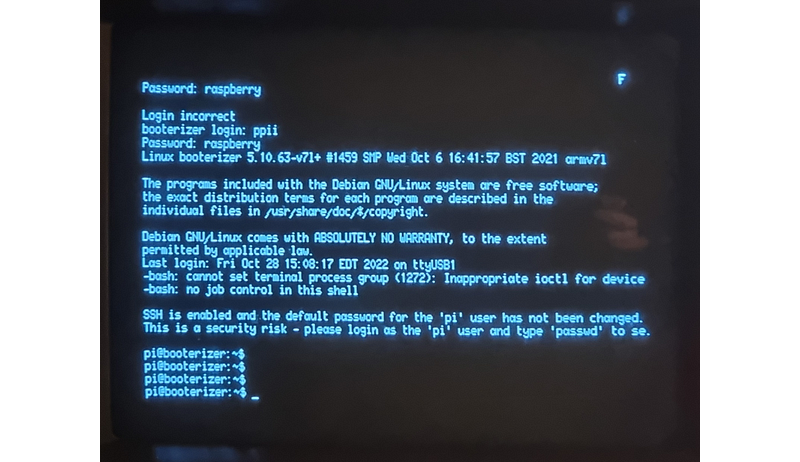
Although Minitel isn't fully compatible with VT100 commands, it generally functions well. Some enthusiasts even place a Raspberry Pi inside the Minitel case for a unique retro experience.
Recreating Minitel's Original Experience with ESP32
To relive the classic experience from the 80s and 90s, you can utilize the Socketel project on the ESP32 board, which allows Minitel to reconnect to the internet.
Connecting the same adapter used for the Raspberry Pi to the ESP32’s pins (5V, GND, RX2, TX2) is straightforward:

After installing MicroPython and uploading Socketel files to the ESP32, you might encounter issues with the latest MicroPython version. Version 1.17 is recommended for compatibility. Once set up, the Minitel menu should appear:
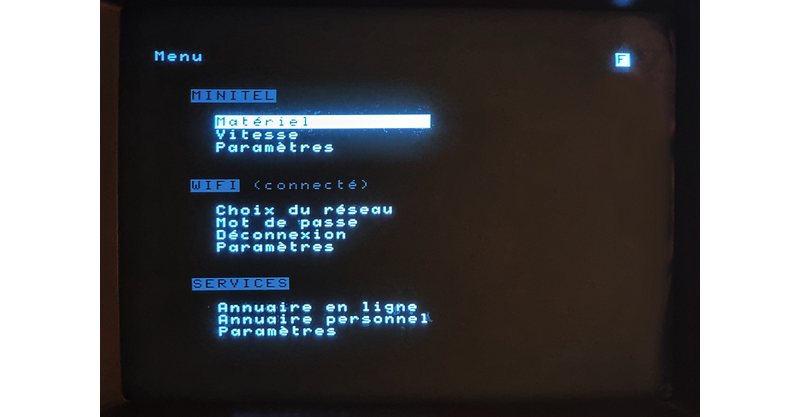
The ESP32 can connect to WiFi, enabling access to certain Videotex servers maintained by enthusiasts, which can now be reached globally through WebSockets:
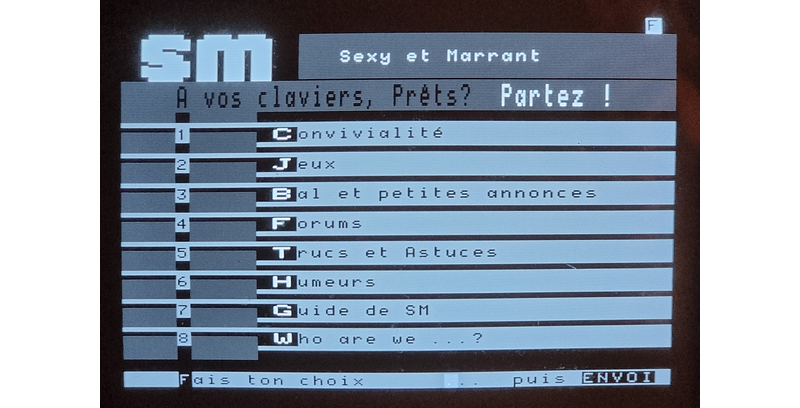
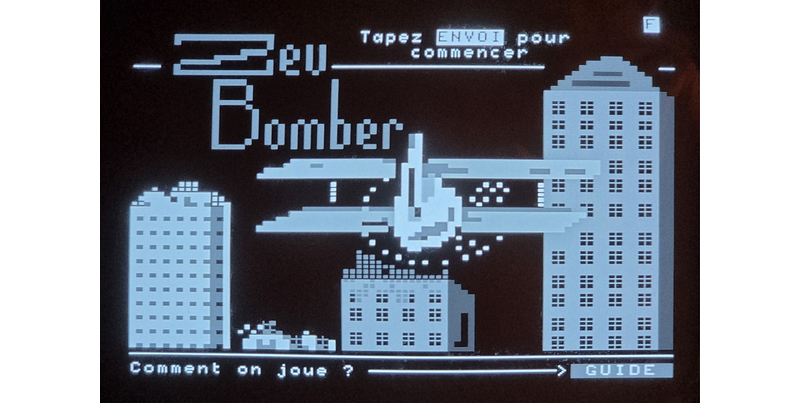
For those curious about the 1200 bits per second data loading speed, here's a quick video demonstration:
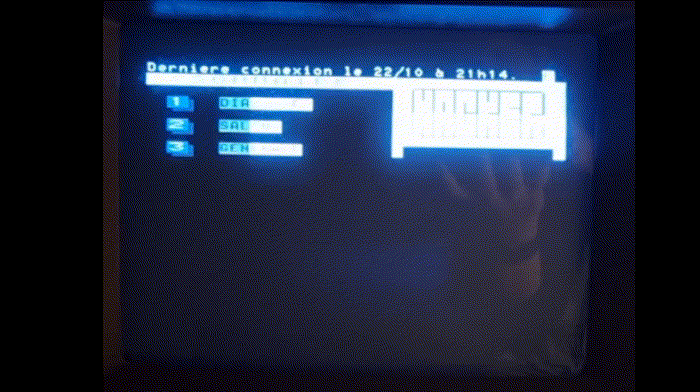
It's evident that Minitel can still thrive in the 21st century! For those interested in further exploration, the Socketel project offers a unique opportunity to engage with this vintage technology.
Conclusion: The Legacy of Minitel
The history of Minitel terminals and the Télétel network stands as a fascinating chapter in technological evolution. This project not only tackled the challenge of creating an affordable and functional device but also navigated the marketing landscape effectively. With government backing in France, initial free terminal distribution helped overcome the "chicken and egg" dilemma, where potential users hesitated to adopt new services without the necessary hardware.
In contrast, initiatives in other countries, such as Ireland, faltered due to a lack of this foundational support. As Jacques Chirac remarked in 1997, "Today, a baker in Aubervilliers knows perfectly how to check his bank account on the Minitel. Can the same be said of the baker in New York?"
The hardware for Minitel also saw advancements, including models advertised in 1996:
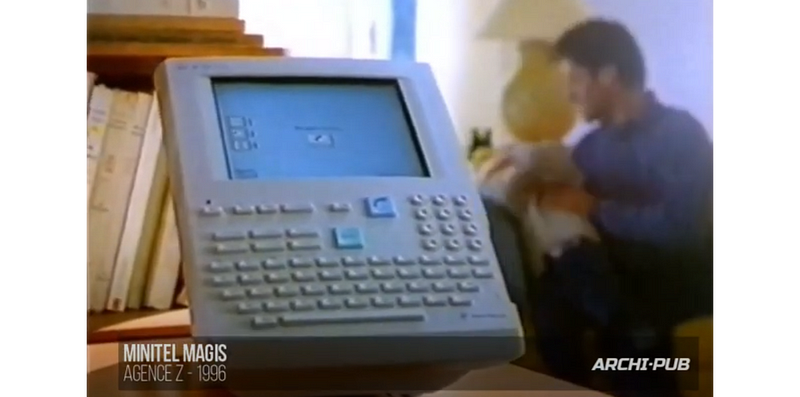
However, as computers became increasingly affordable, the demand for basic text-based services began to wane. The network ultimately ceased operations in 2012, marking the end of an era for a text-based protocol that had operated at a modest 1200 bps for three decades.
Thank you for exploring this intriguing slice of computing history. For those interested in the evolution of portable devices, consider checking out other reviews:
- Compaq Plus Portable (1983)
- Toshiba T1100 (1985)
- Toshiba T3100 (1986)
- Toshiba T3200 (1989)
- Compaq LTE (1997)
- Psion 5MX PDA (1999)
- Palm TX PDA (2005)
- BlackBerry Bold (2011)
Explore the retro French Internet through the Minitel system in this insightful video.
Discover how France was online before the world with Minitel in this nostalgic video.